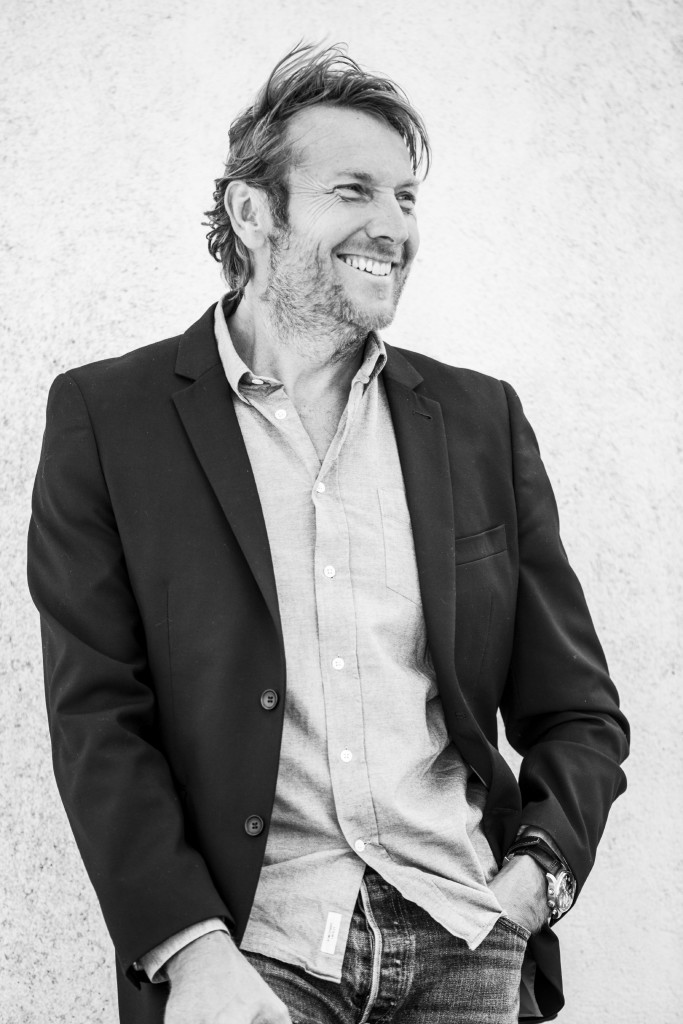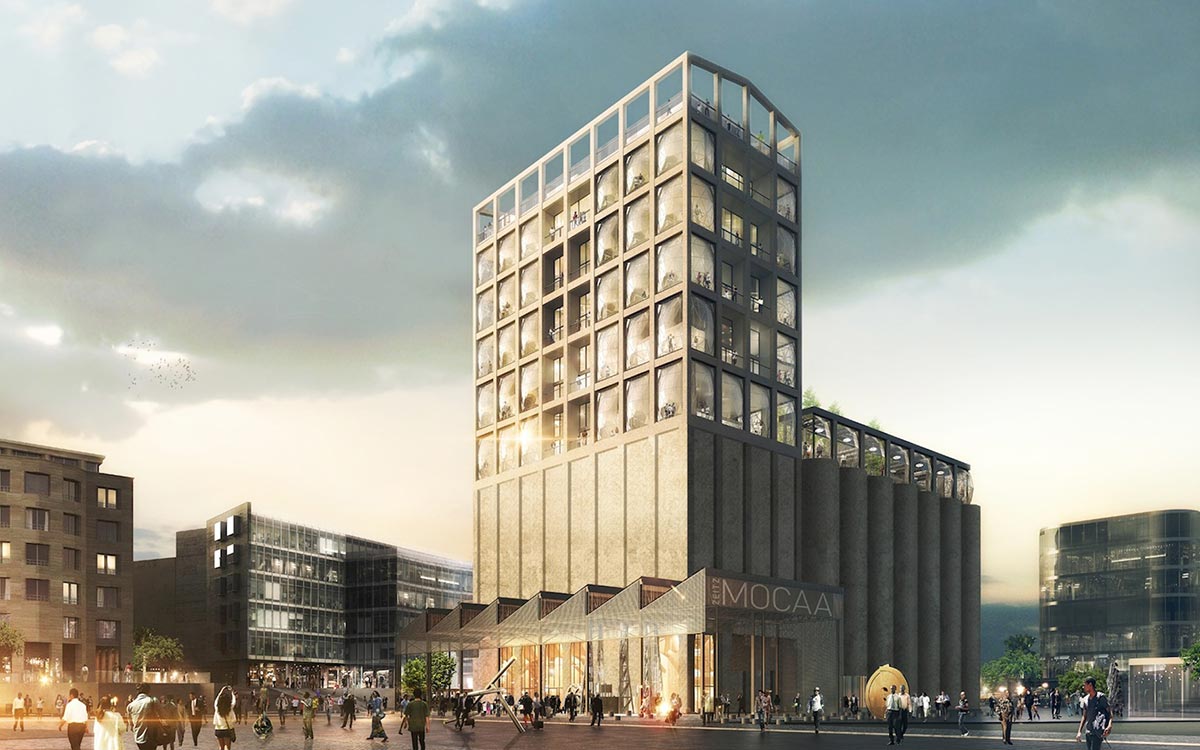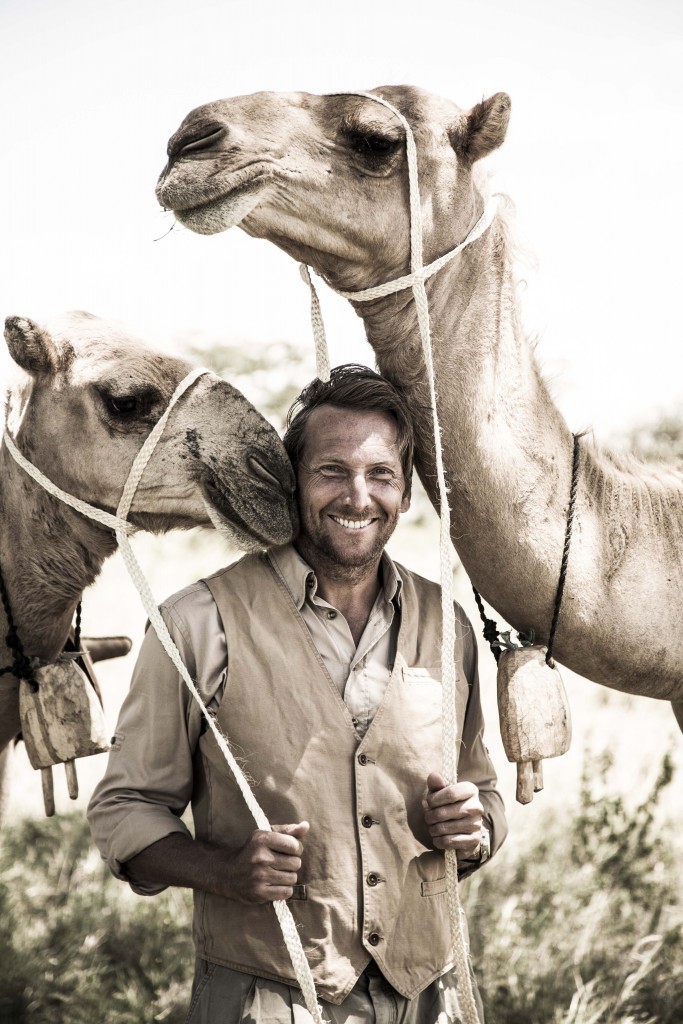LUXURY FOR THE LONG RUN
When it comes to our 2016 campaign, Made In Africa, few people could be better placed to give their perspective than Jochen Zeitz. The owner of Segera, founder of the Zeitz Foundation and The Long Run and co-chair of both Zeitz MOCAA and the B Team, he continues to play an instrumental part in shaping the modern Africa that we see today, bringing new standards for sustainability into the tourism sector and exposing the world to the creativity and artistic expression that is bursting from the continent. Ahead of his keynote talk at the Conference on 2 May, we caught up with Zeitz to discover how Africa has inspired him along his current path, the vital role the travel industry has to play in telling the real stories of the continent, and what he wants our audience to remember from his words.

What motivated you to create your projects in Africa, such as Segera Retreat and the new Zeitz Museum of Contemporary Art Africa (Zeitz MOCAA)?
I went to Africa for the first time in 1989 and from then on I just was in love with the continent and its people, and in particular with nature. I wanted to make Africa my home, so 13 years ago I bought my properties in Kenya, alongside integrating Africa into the DNA of the Puma brand and the diaspora in Jamaica and other countries.
I saw opportunities to contribute to the continent that I loved and I was always inspired by its creativity, its athletes and its nature, and when I see an opportunity I usually grab it. I felt that the enormous creativity that was coming from Africa and its roots needed a platform to shine. There was little representation of Africa at art fairs around the world, and on the continent, yes there were some famous artists, but there was not really that platform for creative artists to represent themselves on the African continent.
Consequently they ended up in other people’s collections or were not even discovered because the infrastructure was only partly available, and I felt I could contribute to that by building the museum, so that’s what I did. Just as I purchased Segera in Kenya, I saw an opportunity to get other people inspired as much as I was inspired by Africa, by building this high-end tourism retreat that was fully sustainable; proving that luxury can be sustainable and using it as an ignition for others to hopefully get inspired about a more sustainable way of living and in particular doing business. That’s when I started the B Team with Richard Branson and joined other boards like Kering, Harley Davidson and Wilderness, because I saw an opportunity for businesses to change their traditional way of doing business and look at not just financial profits and short term profits but social environmental returns through business.
That’s what drove me to create a museum, to set up Segera, to build the Zeitz Foundation and set up the Long Run Initiative, which is now a global initiative of over 70 members that are all inspiring to preserve the land according to the philosophy that we created: the four Cs of Conservation, Community, Culture and Commerce.
I felt that the enormous creativity that was coming from Africa and its roots needed a platform to shine.
Zeitz MOCAA is the first of its kind on the continent and I think the continent is definitely hungry for something like this, but what do you think the reaction will be from the West, who often have a different view of what Africa looks like?
That is one of the other reasons why I built the museum, because I see a very skewed view travelling through the world about Africa. We hear about problems and destruction and wars, but I see the other side of Africa and think a museum can contribute to the consciousness of people, not just in Africa but also outside in the world, about an understanding of Africa’s issues: what Africa is excited about and what Africa sees as its social, environmental and political issues, which artists are dealing with.
We chose Cape Town because for many it is a gateway into the continent. It already has a good infrastructure for art galleries and it also hosts an iconic building which used to export grain into the world, where now we are exporting art into the world, and has millions of visitors at the Waterfront throughout the year. So to sustain a museum long term, it’s important to expose people to the museum and for that you need local visitors and international visitors. Cape Town delivers that.

What influence do you think Africa will have in the world once we start owning the rights to our own history and our own narrative?
We live in a global society, a global world, but we’re influenced through so many things in our lives, much more than we ever used to be, through the internet and social media; the next generation is just much more connected. So the ability for everyone, no matter where you are, to communicate what you want to say is much easier today, and you can be heard if you have a unique message. So I would say there is a unique opportunity now for Africa. You can’t talk about America and say America is one thing. It’s diverse cultures, it’s diverse interests, it’s diversity in people, it’s diversity in everything: and so is Africa. I feel there is a tremendous opportunity to define your own history by telling stories. The museum and everything that will come with it – the educational programmes we are doing, the environmental programmes we are doing through Segera, the visitors coming through – will be able to tell that story.
So you define your own narrative, but of course, like everything, you will always also be exposed to the opinions and influence from the outside world. Again, the grain silo is a great example: it can now export its stories into the world, and whatever the story may be, it’s a very diverse one for sure. So that’s important to me and that’s why again Segera, in the long run, is a fantastic tool to communicate nature along with society and people’s issues. We are very human-centric but nature, especially as it comes to Africa, still plays an important role in the world, and to preserve nature in a sustainable way is also something that we want to communicate through the things that we are doing. The museum is just one vehicle to communicate that and Segera is another.
I feel there is a tremendous opportunity to define your own history by telling stories. The museum and everything that will come with it will be able to tell that story.
It’s exciting what you’re doing with the museum and Segera. You’re giving Africa an opportunity to sit at the global table, because these are all channels where we can tell the world what Africa really is.
Exactly, and what’s great is that the reception since we announced the museum is great and everyone is willing to cooperate with us. We have had visitors from all the big museums around the world and the trustees come and visit and offer their support. So it’s lovely to see that people are not looking at this in a competitive way, but they’re saying this is exactly what needs to happen now as a next step.
Look at China 10 years ago, what has happened culturally in the evolution of China as a country with a massive and very long history. I feel there is an opportunity for Africa to do the same by talking about its history, its legacy and all the issues that are very contemporary today. Hence the contemporary museum rather than a modern museum or a history museum. We want to define the dialogue today and in the future by not necessarily talking about the past, although the past always plays a role, of course, in our artists and how the world interprets your presence in the present day.
The Zeitz Foundation is achieving the highest standards of sustainability through the balance of conservation, community, culture and commerce in privately managed areas. What role do you think tourism has in achieving this?
I think tourism is one of the largest industries in the world. It employs not just big companies, it’s very much a local business – the majority of the industry around the world is actually local and not owned by international conglomerates as we see in many other sectors. So it’s one of the largest sectors, yet it is very community-driven, because it’s about the people on the ground that tell the story, whether it’s a culture story, people story or a nature story.
So that means there is a great narrative already that needs to be told and I truly believe that tourism has a role to play, and lead actually, from a sustainability point of view. I’m not talking about making it the green story. It’s just you have to preserve what you use and we have to preserve nature, we have to preserve and evolve society, but we also need to give something back. It can’t be just financial benefit. Financial benefit helps us to sustain doing good in every respect – be prosperous in business but also prosper in communities, prosper in nature. I think that tourism in particular has a significant role to play because you’re getting people to visit your location and you have a unique opportunity to inspire them.

Our campaign for We Are Africa 2016 is Made In Africa, meaning that we want to replace the stories told about Africa with those told by Africa. How are you planning to address this theme in your talk at the Conference? What do you want the audience to take away?
Everything I’m doing is Made In Africa. It’s not me interpreting Africa; it’s Africa speaking for itself. So although I’m German, I look at myself as using the ingredients of Africa and letting Africa tell its stories. That’s why I decided to become a resident in Africa. I’m not just a frequent traveller. We were all kind of romanced by all of Africa, at least my generation, and we come with kind of an old fashioned view, but I’m looking from the inside out and not the outside in.
When I look at people that sell the safari, it’s a very traditional way of selling a safari. It’s about getting up at 05:30 in the morning, seeing the first lion by 06:00 and a leopard at 06:30, tick all the boxes and fly on. Isn’t there more to it? Isn’t it time to also tell a story that goes well beyond the first sighting of a lion? Through my own experience at Segera, initially people would say: why do you have artwork on a retreat? Why would you tell a story of the four Cs? People want to see animals and so on and so forth. I say: is that really what Africa is all about, or are there more stories to tell? This whole slow life movement of actually experiencing nature and getting inspired by these fabulous stories behind it and even maybe the daily struggles and challenges. I’ve noticed since we opened Segera that people are much more interested in community stories than anybody from the trade ever told us. It’s our responsibility, on the ground, to tell a story that depicts a different, realistic picture about Africa that gets people excited about it. We have had nothing but a great experience telling these stories.
It’s our responsibility, on the ground, to tell a story that depicts a different, realistic picture about Africa.
With all the roles that you play, if you could choose one thing to do for the rest of your life, what would that be?
That would be a question that I wouldn’t have an answer to, because there wouldn’t be just one thing. I love to be creative and see my ideas – and other people’s ideas – come to fruition and be successful. I think the one thing that I would want is everything that I have successfully started, that others will take it on and move on with it and grow the story in their own way. So sowing the seed with the various things that I am doing and seeing it grow without me would be the one wish I would have, but it’s not necessarily the one thing I would do. It’s the legacy that you leave behind: that you’ve made a difference that other people can get inspired by and follow.
Hear Jochen Zeitz speak at the We Are Africa Conference on Monday 2 May at Cape Town City Hall











